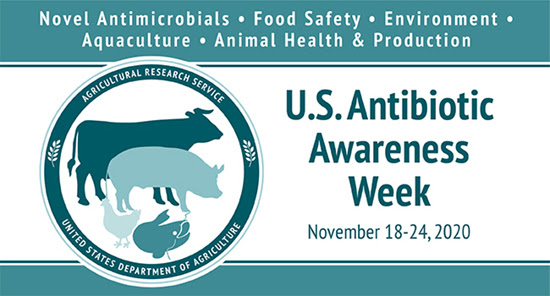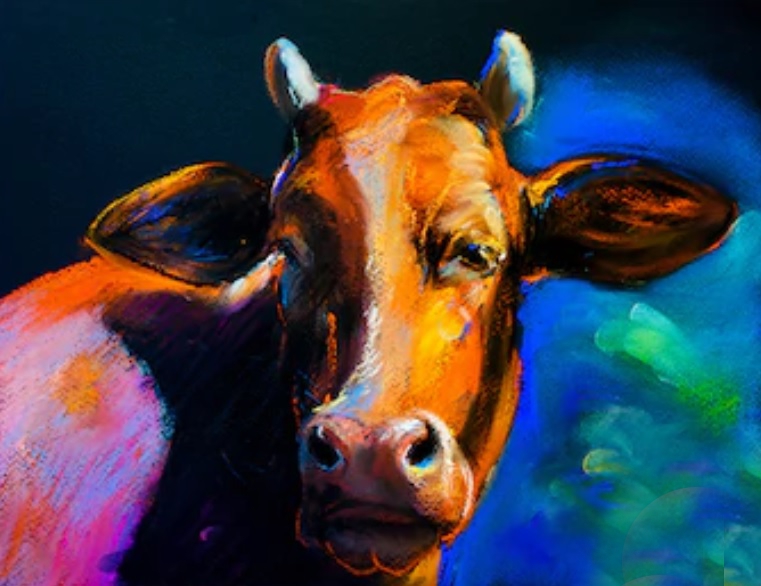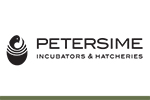We have
197 Readers online now
 In this section you can read and publish your scientific articles.
In this section you can read and publish your scientific articles.
Send your material to: This email address is being protected from spambots. You need JavaScript enabled to view it.
- Details
- Parent Category: Articles
- Category: Poultry Sciences articles

By: Dr. Ahmed Kamal Al-Sayed
The Mycoplasma microbe is considered one of the most dangerous respiratory microbes that infect chickens, because this microbe is neither a bacteria nor a virus, but rather combines characteristics of both, as it is not surrounded by a cell wall like bacteria.
Read more: Mycoplasma and its impact on the poultry industry (mycoplasmosis)
- Details
- Parent Category: Articles
- Category: Poultry Sciences articles
![]() ISOQUINOLINE ALKALOIDS SUPPORT BROILERS UNDER HEAT STRESS
ISOQUINOLINE ALKALOIDS SUPPORT BROILERS UNDER HEAT STRESS
by Dr. Anja Pastor, Phytobiotics Futterzusatzstoffe GmbH, Germany
Modern, highly productive poultry breeds are susceptible to heat stress. This, in combination with rising global temperatures, poses a challenge for the poultry industry.
Plant-based nutritional solutions provide the opportunity to stabilize broiler chickens during heat stress periods.
The fast growth rate of modern broiler breeds offers many advantages – for instance, a resource-friendly production due to an improved feed conversion ratio (FCR) and shorter production periods. The downside of this boosted metabolic activity is a minimized tolerance to heat stress. This is further eroded by the fact that poultry per se are susceptible to high temperatures due a high body mass to body surface area ratio, as well as a lack of sweat glands on the skin and their insulating feathers.
- Details
- Parent Category: Articles
- Category: Poultry Sciences articles
Breeding Geese by:Rafea Taher Muhammad Khalil - Iraq
Singular (goose) and plural (Geese) is a genus of waterfowl belonging to the same family as ducks (anatidae). Some excavations indicate that it was present in some regions of Italy thousands of years before Christ. I also found some Pharaonic images that represent geese, which indicates that it has been domesticated for a long time in old Egypt.
- Details
- Parent Category: Articles
- Category: Poultry Sciences articles
Eco-friendly practices in fish farming:reducing the ecological footprint by:Dr Ahmed Khrissat - Jordan
Briefly; fish farming is a fast-growing industry, with global production expected to exceed 100 million tons by 2030. While fish farming provides a sustainable and efficient way to meet the increasing demand for seafood, it can also have a significant impact on the environment. Intensive production methods used in fish farming can lead to waterways pollution, overuse of resources such as water and energy, and the use of chemicals and antibiotics can harm the environment and human health.
Read more: Eco-friendly practices in fish farming: reducing the ecological footprint
- Details
- Parent Category: Articles
- Category: Poultry Sciences articles
Breeding Systems and Establishment of Ostrich Farms by:Dr Safwat Kamal - Egypt
In summary, the site should be tested for the establishment of the farm, especially the desert lands, as they are cheap and commensurate with the nature, behavior and requirements of ostriches.
Read more: Breeding Systems and Establishment of Ostrich Farms
- Details
- Parent Category: Articles
- Category: Poultry Sciences articles
Powdered Eggs by:Dr Tamim Al Shahneh - Syria
Briefly, powdered eggs, an ancient term referring to eggs in a completely dried form, similar to powdered milk, offer several advantages and diverse uses. They have an extended shelf life, lasting 5-10 years when stored without oxygen in a cool environment. Powdered eggs do not require refrigeration due to the pasteurization process during production. They are pathogen-free, making them safe for raw consumption in certain products like mayonnaise.
- Details
- Parent Category: Articles
- Category: Poultry Sciences articles
A Study on the Most Important Poultry Diseases by:Dr Safwat Kamal - Egypt
Briefly, the writer of this article gives us a thorough explanation on the most important diseases in poultry with their symptoms and ways of treatment. He starts with the most common disease, the bird flu which is also known as the Avian flu.
- Details
- Parent Category: Articles
- Category: Poultry Sciences articles
How do Fungal Toxins Suppress the Immune System of Poultry Against Infectious Diseases? by: Dr Turki Sarakbi - Yemen
One of the most immunosuppressive elements that can be found in poultry feed is mycotoxins. Mycotoxicosis is the term used to describe various clinical syndromes in birds resulting from the consumption of feed contaminated with fungal toxins. Both cellular and humoral immune responses can be affected by the presence of fungal toxins in animal diets. Specifically in poultry production, mycotoxins interfere with and impair immune organs such as the spleen, thymus, and bursa of Fabricius, reducing the antibody response to vaccines and disrupting fungal-specific immune responses as an inevitable consequence of chicken feed contamination with fungal toxins, even at concentrations lower than those required to induce clinical toxicosis.
Read more: How do Fungal Toxins Suppress the Immune System of Poultry Against Infectious Diseases?
- Details
- Parent Category: Articles
- Category: Poultry Sciences articles
Holistic Approach by: Eng. Ahmed Al-Sakout - Egypt
In summary, CPBIO cherishes the main benefits it offers to a beneficial microbiome for the competitive exclusion of pathogens or even its capability to boost the immune system, including the mucosal layer, and intestinal immune cells.
Microorganisms also produce energy and nutrients such as vitamins, amino acids and short-chain fatty acids (SCFAs) with pathogenic bacteria-fighting properties capable of killing foodborne pathogens such as Salmonella spp.
- Details
- Parent Category: Articles
- Category: Poultry Sciences articles
The New Program of Vaccination Against Salmonella by: Dr. Turki Sarakbi – Yemen
In summary, increasing pressure from governments and food companies on poultry producers to combat salmonella and other pathogens of food origin makes strategic vaccination programs against salmonella more important than ever.
Read more: The New Program of Vaccination Against Salmonella
- Details
- Parent Category: Articles
- Category: Poultry Sciences articles
 Organic acids, particularly short-chain fatty acids (SCFAs) like butyric acid, foster optimal gut health. They can significantly contribute to the improved productivity of aging laying hens, enabling farmers to depend on their performance and extend their laying phase ensuring that at the same time the well-being of the animal. ProPhorce™ SR 130, a butyric acid ester product, shows great improvements in performance of older laying hens.
Organic acids, particularly short-chain fatty acids (SCFAs) like butyric acid, foster optimal gut health. They can significantly contribute to the improved productivity of aging laying hens, enabling farmers to depend on their performance and extend their laying phase ensuring that at the same time the well-being of the animal. ProPhorce™ SR 130, a butyric acid ester product, shows great improvements in performance of older laying hens.
Read more: Unleash the Power of End-of-Cycle Hens with ProPhorce™ SR 130
- Details
- Parent Category: Articles
- Category: Poultry Sciences articles
Cephalosporin Group by: Dr. Tamim Al Shahneh – Syria
In summary, the Cephalosporin group is commonly used for the treatment of gastrointestinal conditions. It is compatible with penicillins and the aminoglycoside group.
- Details
- Parent Category: Articles
- Category: Poultry Sciences articles
Pay Attention to the Source of Limestone and its Calcium Content in Poultry Feed by: Dr. Mohammad Al Zawkari and Dr. Jihad Al Jouaifari
In summary, limestone is used in poultry feed as a source of calcium (Ca). The formulation of the feed often depends on estimating the calcium content of limestone, but unfortunately, the results of the analysis of ready-made sources are relied upon, while there are differences in the actual content of limestone.
Read more: Pay Attention to the Source of Limestone and its Calcium Content in Poultry Feed
- Details
- Parent Category: Articles
- Category: Poultry Sciences articles
Important Points in the Practical Management of Farms - by: Ahmad Kamal l Sayed – Egypt
In this article, the writer talks about the main essential points that we should pay attention to in farms such as lighting, feed, weight, testing, etc…
At the end he sheds light on a very important note which is the following: It is preferable to weigh the eggs individually, i.e. each egg by itself, using a sensitive scale (grams) once a week...and to homogenize the eggs and know the percentage of eggs in each slice.
Read more: Important Points in the Practical Management of Farms
- Details
- Parent Category: Articles
- Category: Poultry Sciences articles
 Animal production is facing several challenges, such as constantly increasing demand for animal protein, limited availability of raw materials, raising prices of raw materials and production costs in general, and increasing incidence of diseases in both animals and humans. Animal protein producers have to try to overcome these challenges by implementing optimal production conditions to be successful.
Animal production is facing several challenges, such as constantly increasing demand for animal protein, limited availability of raw materials, raising prices of raw materials and production costs in general, and increasing incidence of diseases in both animals and humans. Animal protein producers have to try to overcome these challenges by implementing optimal production conditions to be successful.
Read more: ProPhorce™ SR 130: learnings after a decade of use in broilers
- Details
- Parent Category: Articles
- Category: Poultry Sciences articles
 USDA Agricultural Research Service (ARS) scientists and their collaborators continue garnering success in their tests of a compound that could bolster the potency of beta-lactam antibiotics, potentially reducing the dosages required and helping stave off resistance in the germs they're meant to kill.
USDA Agricultural Research Service (ARS) scientists and their collaborators continue garnering success in their tests of a compound that could bolster the potency of beta-lactam antibiotics, potentially reducing the dosages required and helping stave off resistance in the germs they're meant to kill.
Read more: Compound from Soil Bacterium Gets Reboot as Antibiotics Super Booster
- Details
- Parent Category: Articles
- Category: Poultry Sciences articles
 In the hatchery itself there is never a direct reason to apply antibiotics, as the chicks do not stay here for any length of time. If antibiotics are applied (in-ovo or by injection after hatch) this is done preventively to avoid disease problems or for potential benefits at the farm where the day-old-chicks will be delivered. Furthermore, on the farm itself antibiotics can be administered by feed or drinking water as a preventive measure or as a growth promotor.
In the hatchery itself there is never a direct reason to apply antibiotics, as the chicks do not stay here for any length of time. If antibiotics are applied (in-ovo or by injection after hatch) this is done preventively to avoid disease problems or for potential benefits at the farm where the day-old-chicks will be delivered. Furthermore, on the farm itself antibiotics can be administered by feed or drinking water as a preventive measure or as a growth promotor.
Read more: Role of the hatchery in Antibiotic Free (ABF) production
- Details
- Parent Category: Articles
- Category: Poultry Sciences articles
 Maintaining egg shell quality is important for maximizing production of broiler chicks from breeders as shell quality and hatchability go hand in hand. Thin shells allow for higher water vapor loss during incubation resulting in dehydrated chicks and higher late embryonic mortality.
Maintaining egg shell quality is important for maximizing production of broiler chicks from breeders as shell quality and hatchability go hand in hand. Thin shells allow for higher water vapor loss during incubation resulting in dehydrated chicks and higher late embryonic mortality.
- Details
- Parent Category: Articles
- Category: Poultry Sciences articles
 The pocket-sized booklets, 'Management Guidelines for Breeding Turkeys' and‘Management Guidelines for Commercial Turkeys’, have been updated to reflect the latest in industry best practices.
The pocket-sized booklets, 'Management Guidelines for Breeding Turkeys' and‘Management Guidelines for Commercial Turkeys’, have been updated to reflect the latest in industry best practices.
The aim of these booklets is to help Aviagen Turkeys’ customers achieve optimum performance from their birds. The manuals include data from research trials, published scientific reports, as well as the expertise and practical skills of the Aviagen Turkeys Customer Support Team. The publications cover general flock husbandry, feeding, lighting and ventilation, as well as biosecurity and other related topics.
Read more: Management guidelines updated to reflect latest best practices
Subcategories
Poultry Sciences articles Article Count: 95
Bovine, Ovine & Processing articles Article Count: 3
Editorials Article Count: 30
 All the editorials in one place. Read, comment and interact.
All the editorials in one place. Read, comment and interact.
Your ideas are valuable for us
(The editor)
Poultry-Mena Editorials Article Count: 25
 All the Poultry Middle East & North Africa's editorials in one place. Read, comment and interact.
All the Poultry Middle East & North Africa's editorials in one place. Read, comment and interact.
Your ideas are valuable for us
Lana Kalima Article Count: 1
 All the Poultry Middle East & North Africa's "We have our word" in one place. Read, comment and interact.
All the Poultry Middle East & North Africa's "We have our word" in one place. Read, comment and interact.
Your ideas are valuable for us
Bovine & Ovine - Editorials Article Count: 3
 All the Bovine and Ovine's editorials in one place. Read, comment and interact.
All the Bovine and Ovine's editorials in one place. Read, comment and interact.
Your ideas are valuable for us
Coming Shows المعارض في العالم |

















